[ad_1]
You’re probably rising cabbage since you take pleasure in consuming it. And throughout the event you’ve ever tried rising this crop prior to, you probably understand that a great deal of yard pests furthermore take pleasure in consuming cabbage. This textual content material explores potential culprits and the perfect answer to take away them.
Cabbage is a member of the mustard household, generally called the Brassica household, or crucifers. Completely completely different acquainted brassicas embody broccoli, cauliflower, Brussels sprouts, kale, collards, turnips, mustards, and horseradish. These are primarily cool-weather yard greens that love full photograph voltaic and moist, wealthy soil with great drainage.
This brassica is often a spring or fall crop the place it enjoys cool days and cooler nights. It even tolerates gentle frosts. Regardless of its chilly hardiness, this tasty leafy inexperienced vegetable is weak to different insect pests that may shortly decimate a cabbage crop.
Merely as there are various kinds of cabbage, there are furthermore varied totally utterly completely different species of caterpillars and caterpillar-like pests that love munching on the leaves. Furthermore, you may uncover aphids, flies, and beetles. It’s essential to exactly arrange the pests in your vegetation so that you simply presumably can take related motion to deal with them.
Seize a magnifying glass and just a bit little little bit of endurance as we take a look at 15 frequent, and sometimes very small, critters that want to eat these heading brassicas.
Aphids
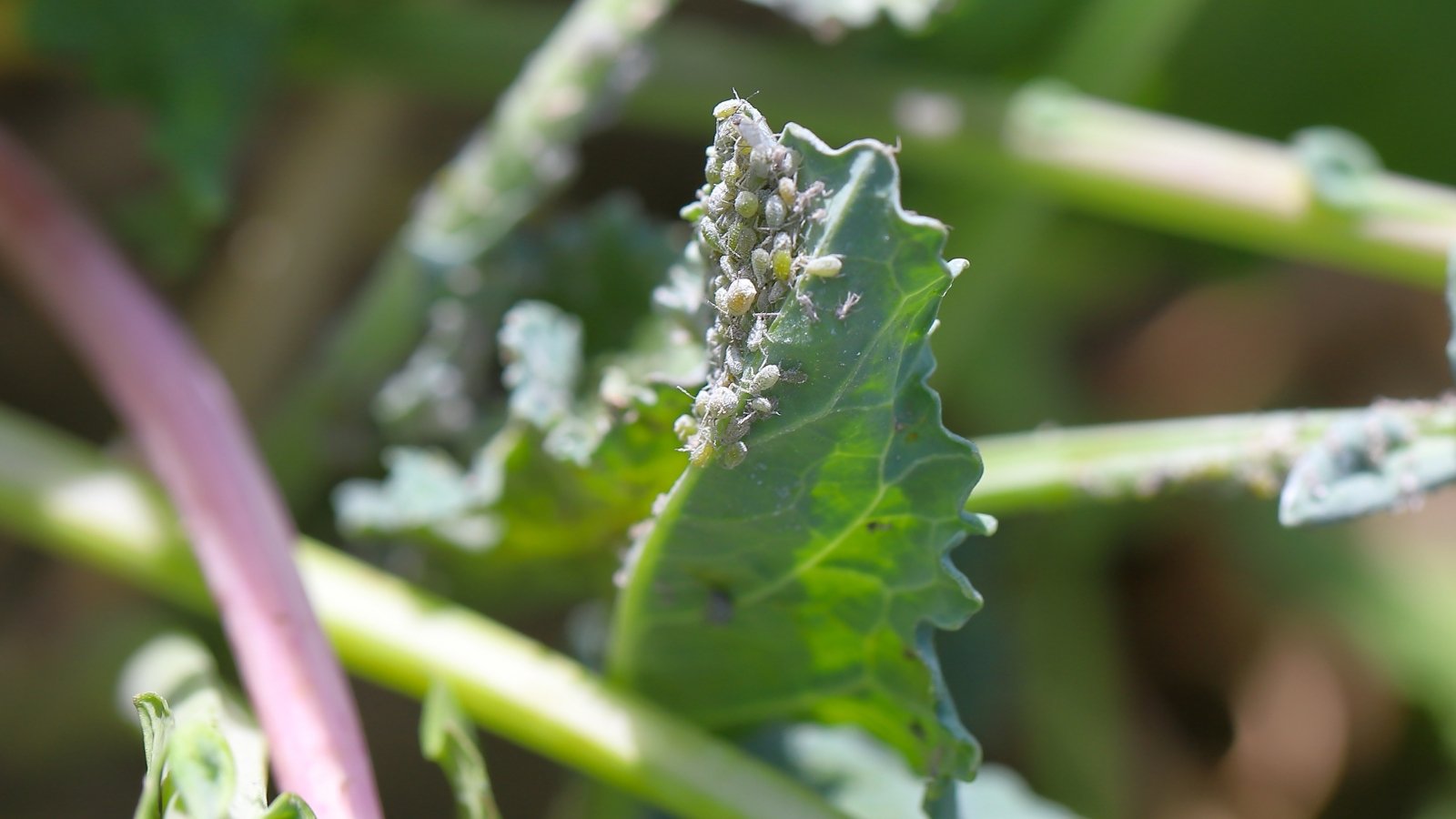

Aphids are ubiquitous yard pests. You’ll see them gathering in huge numbers alongside the leaves and stems of many yard vegetation. They’re furthermore keen on cabbage and congregate alongside the veins of the outer leaves.
These soft-bodied bugs are clearly seen to the bare eye. They could be inexperienced, grey, white, yellow, or pink. Normally, brassica aphids could seem inexperienced nonetheless with a white waxy or powdery-looking overlaying. Aphids suck plant juices and set off the leaves to vary into withered, curled, and weak, in the long run turning yellow and brown, and in the end dying.
Use a robust jet of water out of your hose to dislodge aphids. A day-to-day blast of water is often ample to discourage aphids from coming as soon as extra. You may as well use insecticidal cleaning cleansing cleaning soap to effectively kill aphids, spraying it immediately on teams of those pesky little bugs.
Cabbage Looper
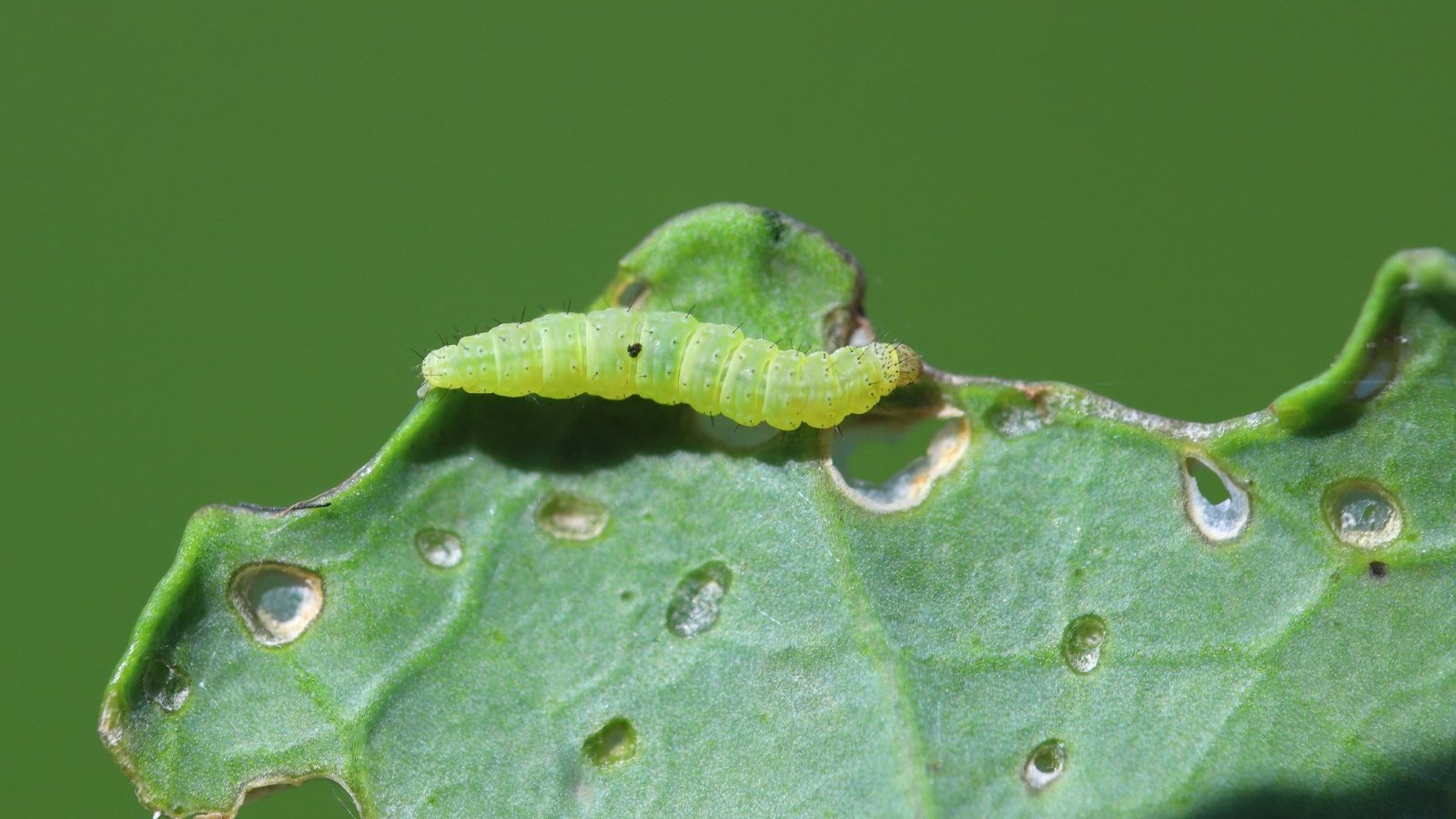

Cabbage loopers are shiny inexperienced inchworms which is often a extreme pest of this crop’s leaves. They swap by inching alongside on account of they’ve no legs all through the center a part of their physique. These are the larvae of an unassuming mottled brown-gray moth known as the cabbage looper moth. The grownup moth lays its eggs on a brassica plant, and some days later, the eggs hatch into voracious little caterpillars.
These hungry little caterpillars chew holes all through the leaves and develop shortly from only a few millimeters extended to about 1.5 inches extended. They munch gaping holes all through the leaves anyplace they are going to attain. A badly infested plant could have leaves riddled with many big, jagged holes.
Cabbage loopers are pretty frequent pests and the bigger they develop, the extra hurt they set off. They will maintain in your vegetation and eat for 3 or 4 weeks, till they’re ready to pupate into their grownup moth sort.
Regulate your vegetation. For many who happen to see telltale holes and shiny inexperienced inchworm-like caterpillars, you’ll be able to have cabbage loopers. Stop them by defending your crops with floating row covers; the grownup moths gained’t have the flexibleness to place eggs on lined vegetation.
Eradicating caterpillars by hand, BT sprays, and pure predators are atmosphere pleasant pure pest administration strategies. Pure pesticides may be utilized.
Cabbage Root Maggots
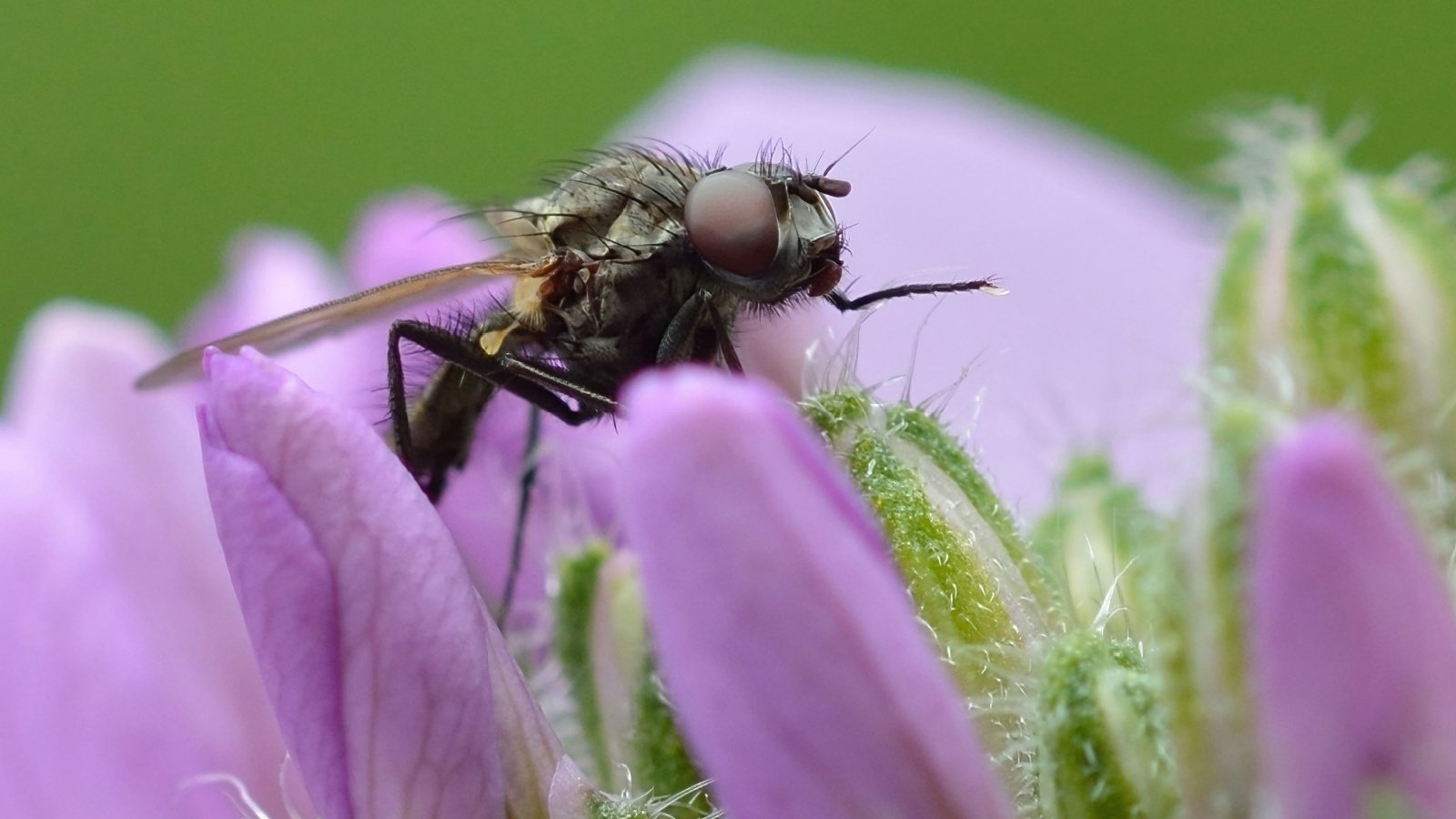

Cabbage root maggots are the larvae of the cabbage root maggot fly, a brownish-gray fly measuring between 5 and 7 millimeters extended. The grownup fly lays its eggs all through the soil on the underside of a bunch plant. The eggs hatch and the larvae burrow into the stem and feed on the plant’s roots.
Because the premise maggots destroy the stems and roots, your vegetation start wilting and the leaves will flip yellow. Shortly thereafter, because of the larvae proceed feasting on the premise system, the vegetation will wilt severely, collapse, and die.
Floating row covers will stop adults from laying eggs on the stems and tilling the soil after your crops are harvested will assist stop overwintering pupae from maturing. Crop rotation with non-brassica vegetation could assist stop a buildup of those pests.
For many who happen to can delay spring plantings till the soil has warmed significantly, this will likely more and more assist kill any eggs which may be current and thus stop an an an infection, though your brassicas could endure from the warmth.
Cutworms


Cutworms are very harmful, given their small dimension. These little caterpillars cut back right by youthful plant stems, inflicting them to topple over and die. There are fairly a couple of species of cutworms nonetheless all of them have the an equivalent methodology of destruction, so it gained’t matter masses that you just merely arrange the species so long as you acknowledge your vegetation have succumbed to a cutworm assault.
Cutworms that assault brassicas could differ in shade, nonetheless all of them seem to have {{{smooth}}} pores and pores and pores and skin they often’re correctly camouflaged with the soil, usually with brown or grey coloration.
These are the larvae of a brown or grey moth. An grownup moth can lay a whole bunch of eggs, every singly or in small clusters, on the underside of their respective host vegetation.
When the eggs hatch, the hungry larvae set to work chewing on leaves or bigger vegetation or slicing smaller vegetation down solely. Cutworm larvae feed primarily at evening time time and conceal all through the soil by means of the day, so you can’t in any respect see them, nonetheless you’ll see proof of their chewing the next morning.
Predatory beetles and parasitic wasps prey on cutworms nonetheless that’s most likely not ample to curb cutworm hurt. Defend your yard mattress weed-free to remove their hiding areas. For many who happen to suspect a cutworm draw back, use BT to assist administration them.
Diamondback Moth
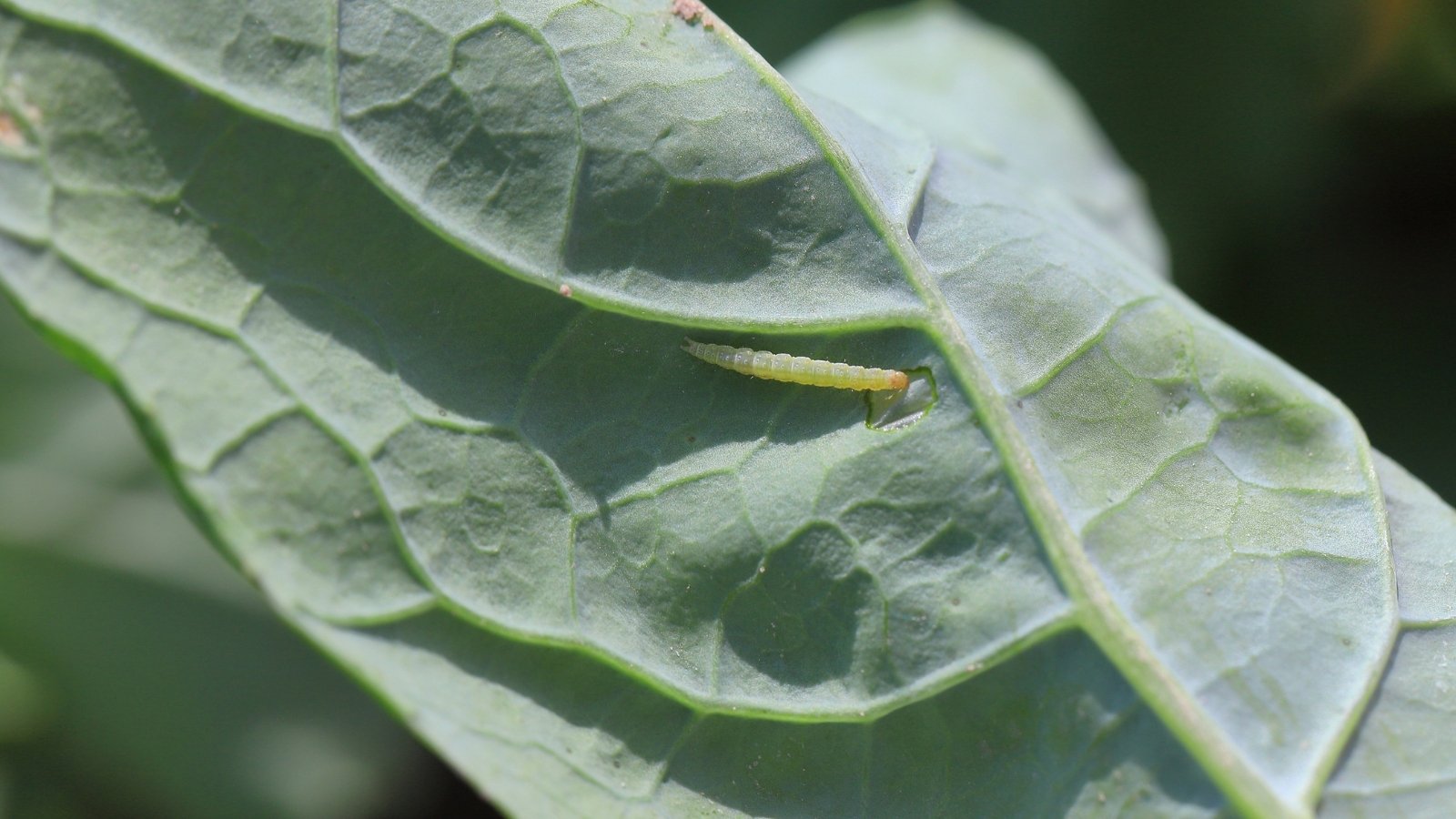

The diamondback moth is discovered all by means of North America and is a pretty frequent yard pest. The grownup moth is small and slender with patterned brown markings. It lays eggs on all cruciferous greens, together with all kinds of cabbage, collards, and cauliflower.
Diamondback moth larvae hatch after just a few days and instantly begin feeding. The small, pale inexperienced caterpillars have tiny black spots on their our our our bodies nonetheless no utterly completely different distinctive markings. They hardly attain a couple of centimeter extended prior to pupating in a silky cocoon associated to the cabbage leaf.
The larvae are small they usually additionally could set off notable pest hurt, though not as masses as among the many many utterly completely different frequent cabbage-feeding caterpillars. Diamondback larvae chew by layers of leaf tissue with out chewing completely by the leaves. That is often a particular distinction between these and most utterly completely different frequent caterpillar pests.
For pure, chemical-free administration strategies, use row covers to forestall adults from laying eggs, and hand-pick specific specific individual caterpillars. Develop cabbages interplanted with non-cruciferous greens and herbs to discourage pests.
Observe crop rotation and embody a quite a few assortment of vegetation in your panorama to welcome a bunch of helpful bugs and insect-eating birds which will provide help to administration pesky insect pests.
Cabbage Webworm
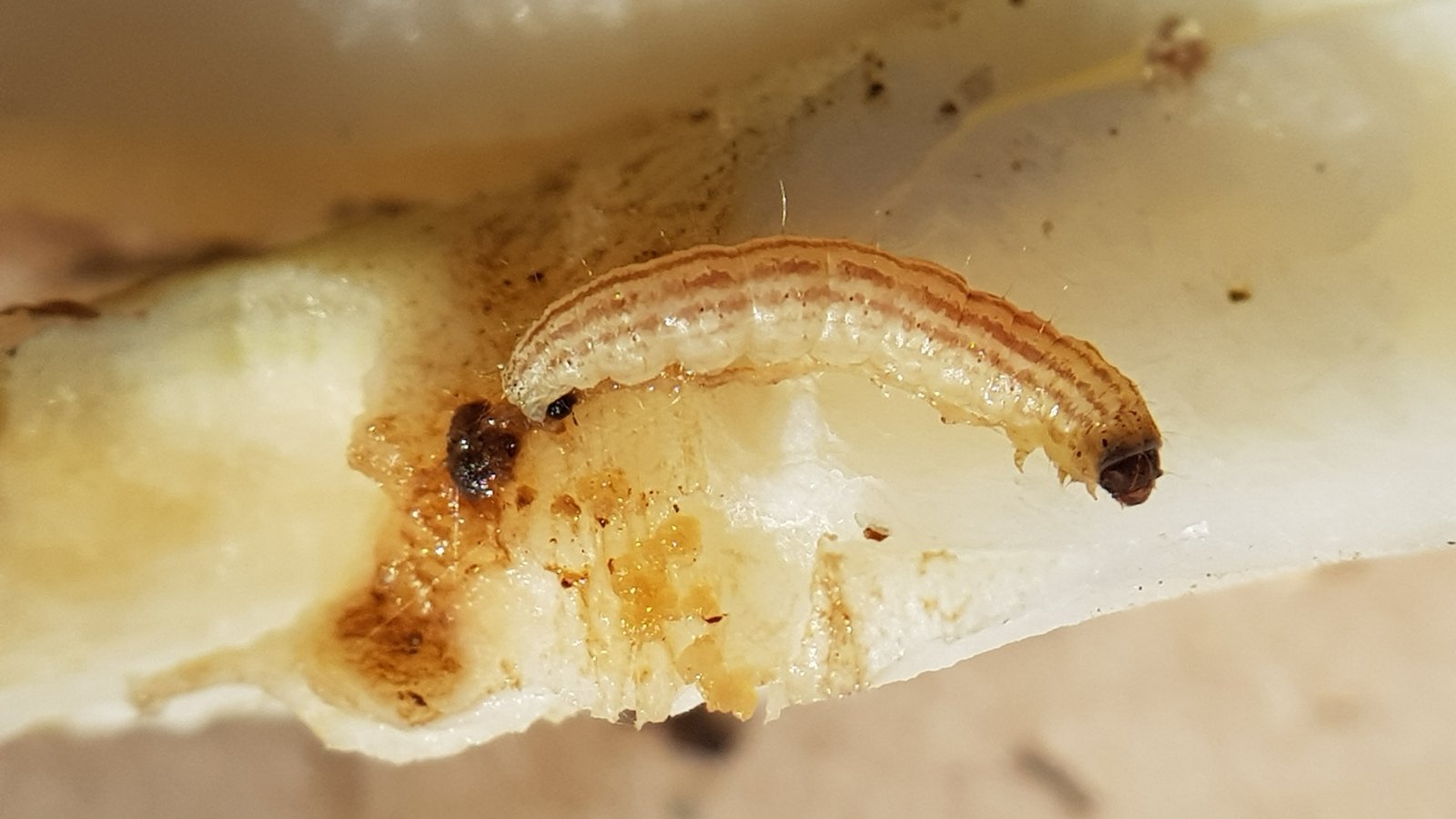

Do you see plump tan to grayish-yellow caterpillars in your vegetation, turning them correct proper right into a chewed-up mess? Youthful caterpillars can also be a strong tan shade whereas older caterpillars have distinct brownish strips working laterally alongside their our our our bodies.
These are the caterpillars of the cabbage webworm moth, a mottled brown moth measuring about one centimeter broad and fewer than two centimeters extended when at relaxation.
These crucifer-loving caterpillars feed on cabbages, broccoli, bok-choy, collards, and turnips, to call only a few of their favourite meals. They typically chew up the undersides of leaves with out breaking all through.
This does ample hurt to set off the vegetation to wilt and forestall head and flower formation. Contaminated vegetation shall be visibly broken, weak, and brittle because of the caterpillars chew into their veins and stems.
These pests are very highly effective to manage. Since they disguise out on the undersides of leaves, they are going to be highly effective to take away by hand and bug predators are inefficient at searching them down.
Pesticides that focus on caterpillars could also be utilized to manage them, nonetheless needless to say these pesticides furthermore injury helpful bugs and pollinators so use them sparingly and punctiliously to cope with merely the pests you see.
Imported Cabbageworm
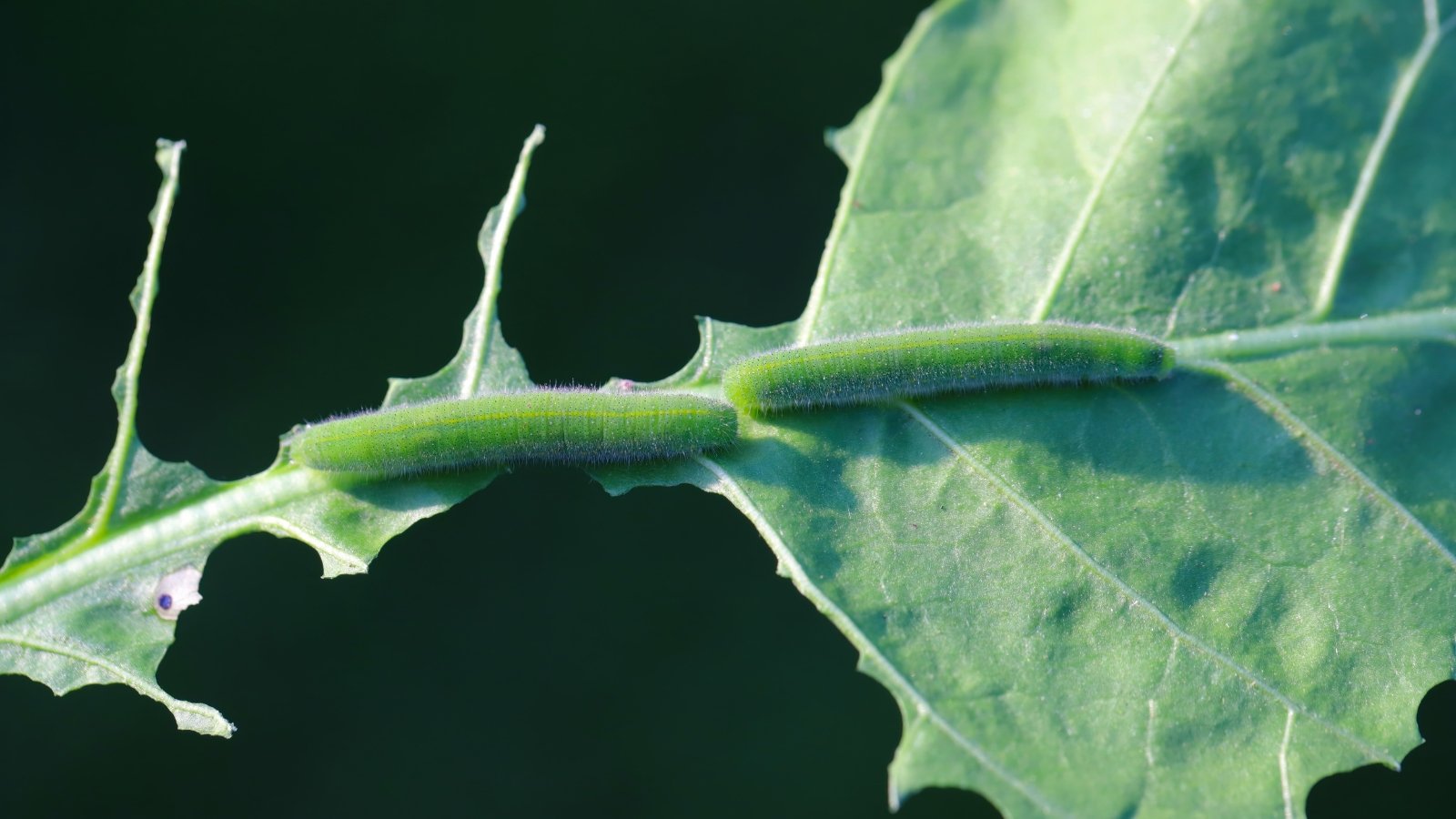

Most caterpillars that feed on cabbage are the larvae of moths. The imported cabbageworm, nonetheless, is the caterpillar of a butterfly often known as the cabbage white. These white butterflies are small butterflies with white wings and distinctive black spots on every wing.
That is often a frequent pest that’s related in look to utterly completely different native species of cabbage white butterflies, though the imported cabbageworm is now the most typical.
These cozy, inexperienced caterpillars measure as quite a bit as three centimeters extended. They’ve a barely ridged, velvety look with pale yellow spots alongside the decrease sides of the physique. These caterpillars feast in your vegetation for about two weeks prior to pupating every on their host vegetation or in surrounding leafy particles.
If heat ample, they emerge as quickly as additional as butterflies inside two additional weeks, nonetheless later all through the season, they may overwinter as pupae and emerge as adults the next spring.
The imported cabbageworm caterpillars usually feed alongside the bigger leaf veins, chewing holes alongside the best method. Fairly a couple of caterpillars on the an equivalent leaf will shortly in the reduction of the leaf to nothing nonetheless veins. They’re blissful to feed on any cruciferous greens and energetic caterpillars can merely swap from one plant to the subsequent.
Parasitoid wasps, vespid wasps, and murderer bugs are predatory helpful bugs that assault these voracious caterpillars. Hand-picking is atmosphere pleasant nonetheless tedious on account of there’ll usually be a whole bunch of those little inexperienced caterpillars in your vegetation.
Inserting in floating row covers on the time of planting could be very atmosphere pleasant at retaining the adults off your vegetation, subsequently stopping them from laying their eggs.
Cross-Striped Cabbageworm
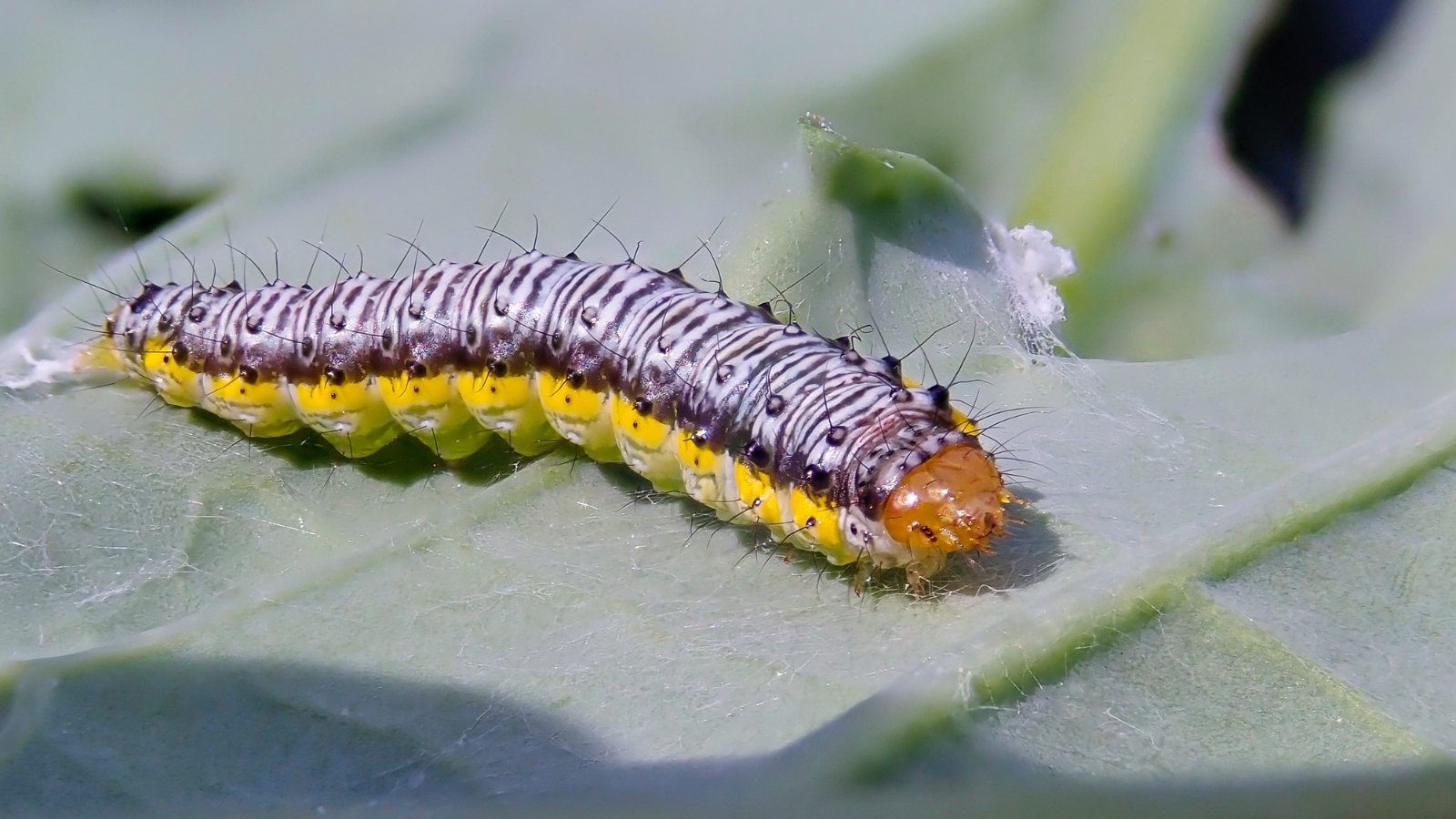

Cross-striped cabbageworms are a the larvae of a moth and are frequent brassica pests all through the southeastern United States. They feed on cabbage vegetation, broccoli, cauliflower, and utterly completely different favourite yard brassicas. You’ll uncover their preliminary feeding hurt as holes all through the leaves, nonetheless because of the hurt progresses, the leaves can also be solely skeletonized.
It’s possible you’ll under no circumstances uncover the non-descript gray-brown grownup moth nonetheless the caterpillars are pretty apparent. They shortly develop from an egg as quite a bit as about one-inch-long caterpillars. They’ve orange heads, yellowish and grey lateral stripes on their sides, and a white, grey, and yellow speckled sample on their backs.
These caterpillars are commonest with late-season crops. Stop the grownup moths from laying eggs in your vegetation by overlaying them with floating row covers. Invite helpful bugs, paying homage to parasitic wasps, to your yard to assist administration caterpillar pests. Attempt eradicating specific specific individual caterpillars by hand if in case you’ve got just a few cabbage vegetation.
Southern Cabbageworm
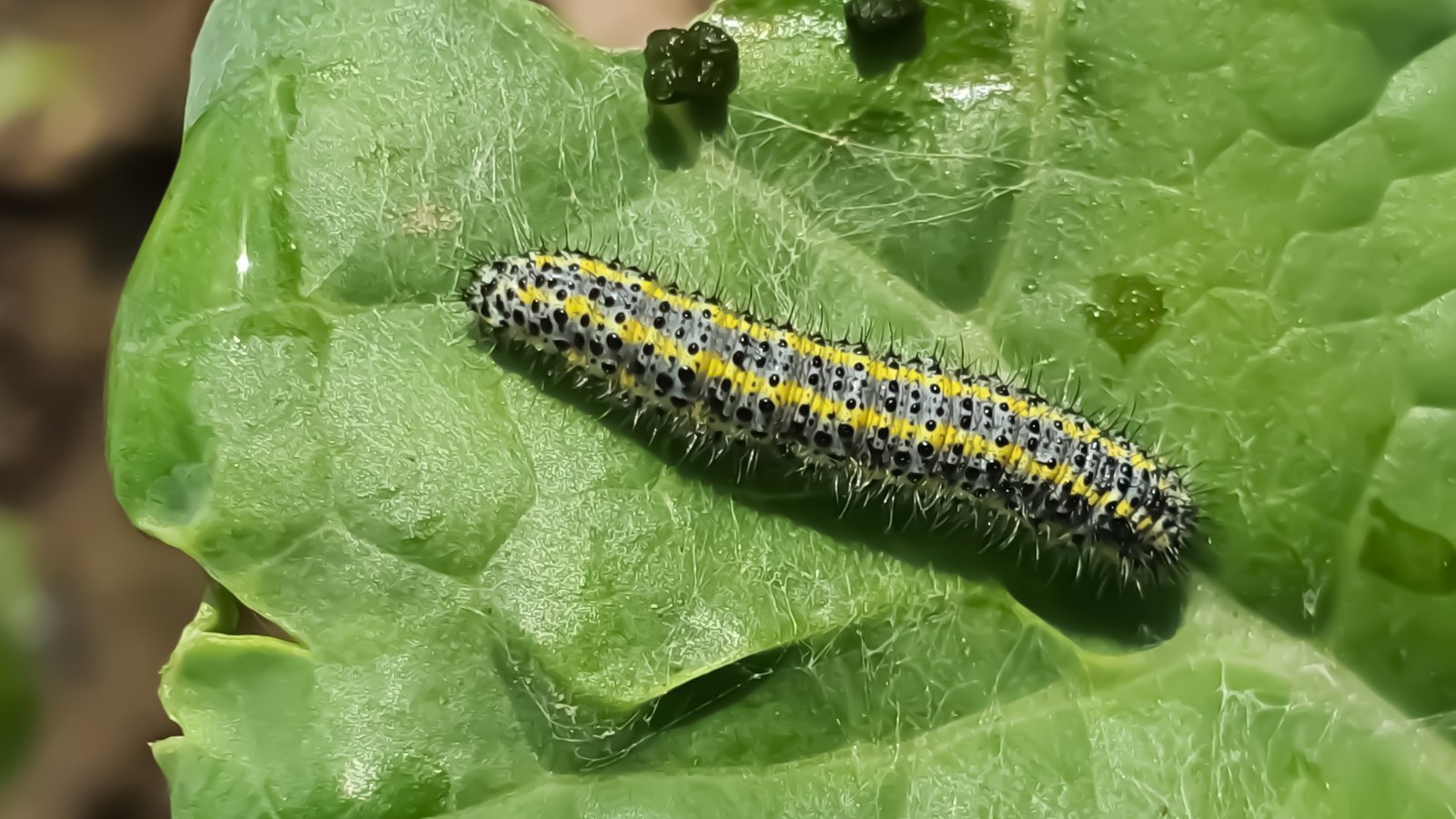

The southern cabbageworm is a typical pest all by method of a complete lot of the southern United States, though it might be present in additional northern states. It’s the larvae of the checkered white butterfly which lays its eggs on brassica crops.
The caterpillars then feed on the leaves till they attain maturity and pupate into the subsequent experience of grownup butterflies.
Southern cabbageworm caterpillars attain merely over one inch in dimension. They’re grey and yellow striped, with tiny, irregular black spots and coarse, transient hairs. You’ll see the caterpillars on the leaves, and likewise you’ll clearly see the ragged-edged holes they chew as they feed, usually solely all through the outer layer of leaves.
These caterpillars appear like additional of a problem for fall crops than spring crops, they usually additionally could be not a problem yearly.
Administration these caterpillars as you’ll utterly completely different caterpillar pests. Use floating row covers to stop butterflies from laying eggs in your vegetation. For many who happen to simply have just a few cabbage vegetation, spend a while in your patch on every day basis and hand-pick specific specific individual caterpillars. Enchantment to helpful bugs to your yard that may feed upon these and utterly completely different caterpillar pests.
Beet Armyworm
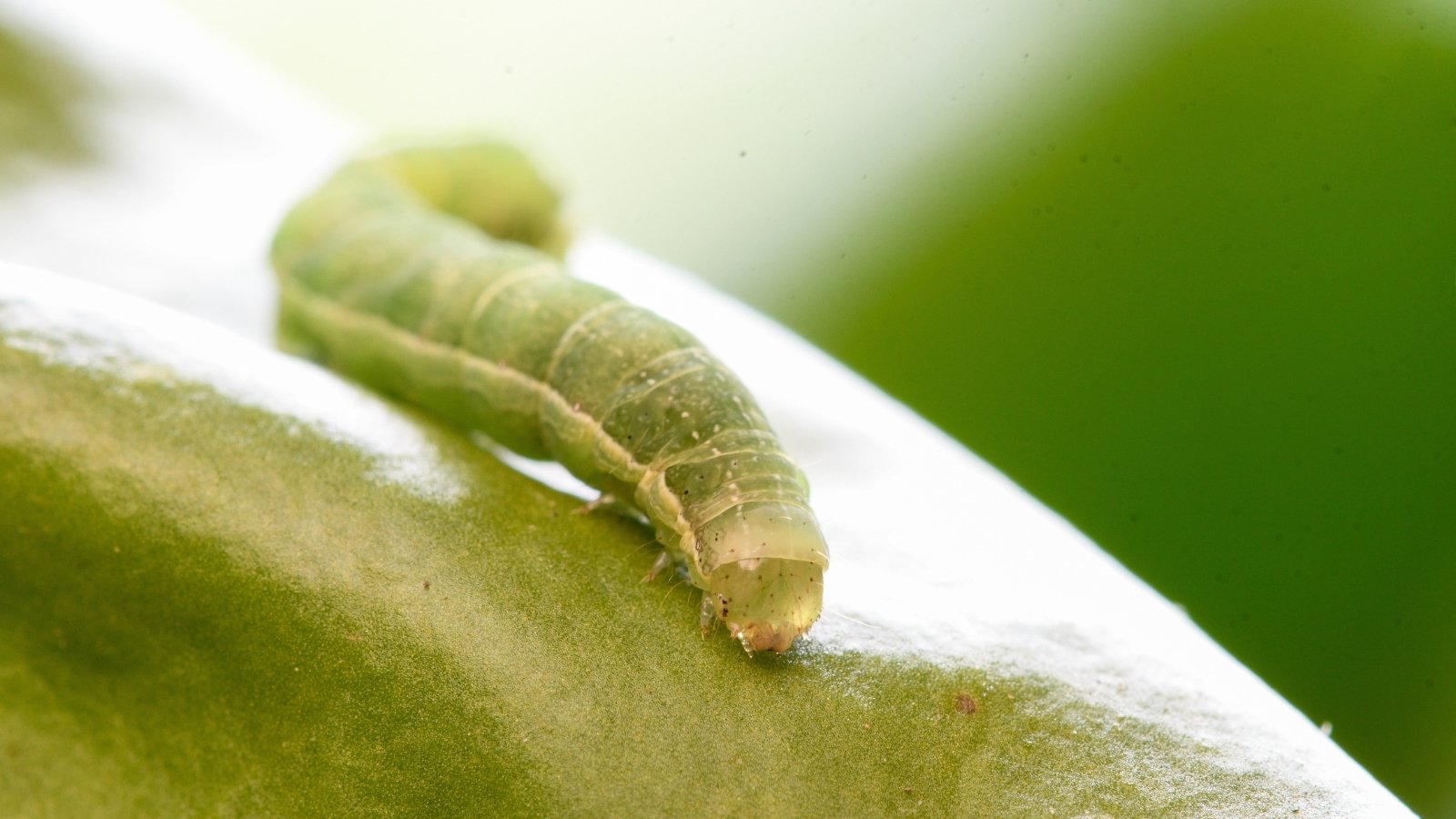

The beet armyworm is a typical pest, significantly all through the southern United States. That is the caterpillar of the mottled brown beet armyworm moth. The grownup has a wingspan of about three centimeters and a cozy, fuzzy-looking pale grayish-brown physique.
Adults lay their eggs on each type of yard greens, together with cabbages and utterly completely different brassicas together with many others. In distinction to many butterfly and moth species which have very specific host vegetation, the beet armyworm appears to eat utterly one thing.
Every grownup feminine can lay as quite a bit as 600 eggs, which signifies that you’ll doable have a military of hungry caterpillars feasting in your favourite yard veggies.
The caterpillars are pale inexperienced and plump. Their {{{smooth}}} our our our bodies are every all inexperienced with assorted inexperienced bands or they’ve a particular reddish-pink line alongside each side and a line of darkish spots or highly effective ovals above the pink strains. These caterpillars feast their methodology by the leaves, making huge irregular holes as they feed.
Prevention is among the many best strategies to manage a beet armyworm invasion, utilizing floating row covers on the time of planting to guard your cabbage crop from adults making an attempt to put eggs.
Parasitic wasps and utterly completely different insect predators will fortunately feed on these plump caterpillars. Pure and pure controls are greatest for these pests on account of they’re largely proof in opposition to pesticides, which ends up in the overuse of ineffective chemical compounds and harming helpful bugs.
Flea Beetle
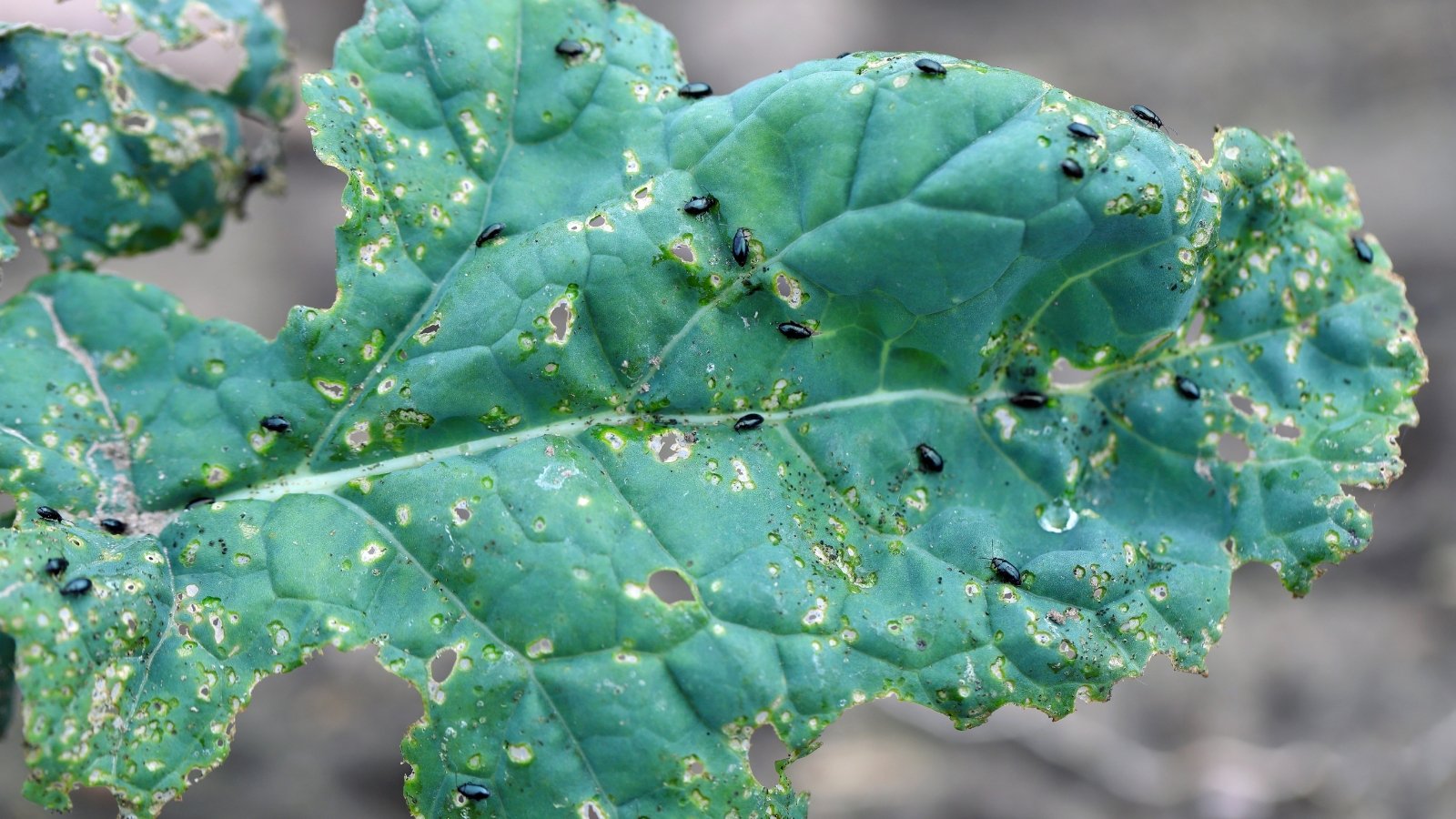

The flea beetle is a small black beetle that feeds on leaves, significantly of youthful vegetation. They chew many tiny holes all through the leaves and if varied beetles are current, as they often are, they are going to merely destroy seedlings prior to they’ve a risk to develop. These tiny beetles have the habits of springing from one place to a definite, incomes them their set up.
Flea beetles don’t cope with cabbages or brassicas, they chew up many different yard crops as correctly, together with beans, eggplants, and tomatoes. When you’ve got these pests in your yard all by means of one season, you presumably can anticipate to see them persist by your full rising season, damaging varied crops to the goal of oblivion.
These persistent pests are highly effective to manage nonetheless there are some preventative measures it is best to take in the event you’ve seen these beetles prior to. Until your yard all through the autumn to level out any buried bugs and eggs which may be hiding all through the soil.
Add helpful nematodes to your soil to feed on the soil-dwelling beetle larvae. You may as well attempt companion planting with mint and basil to assist repel flea beetles and utterly completely different pests, together with entice helpful bugs to your yard. Pyrethrin and spinosad are pure pesticides it’s worthwhile to use together with cultural and preventative controls.
Harlequin Bug
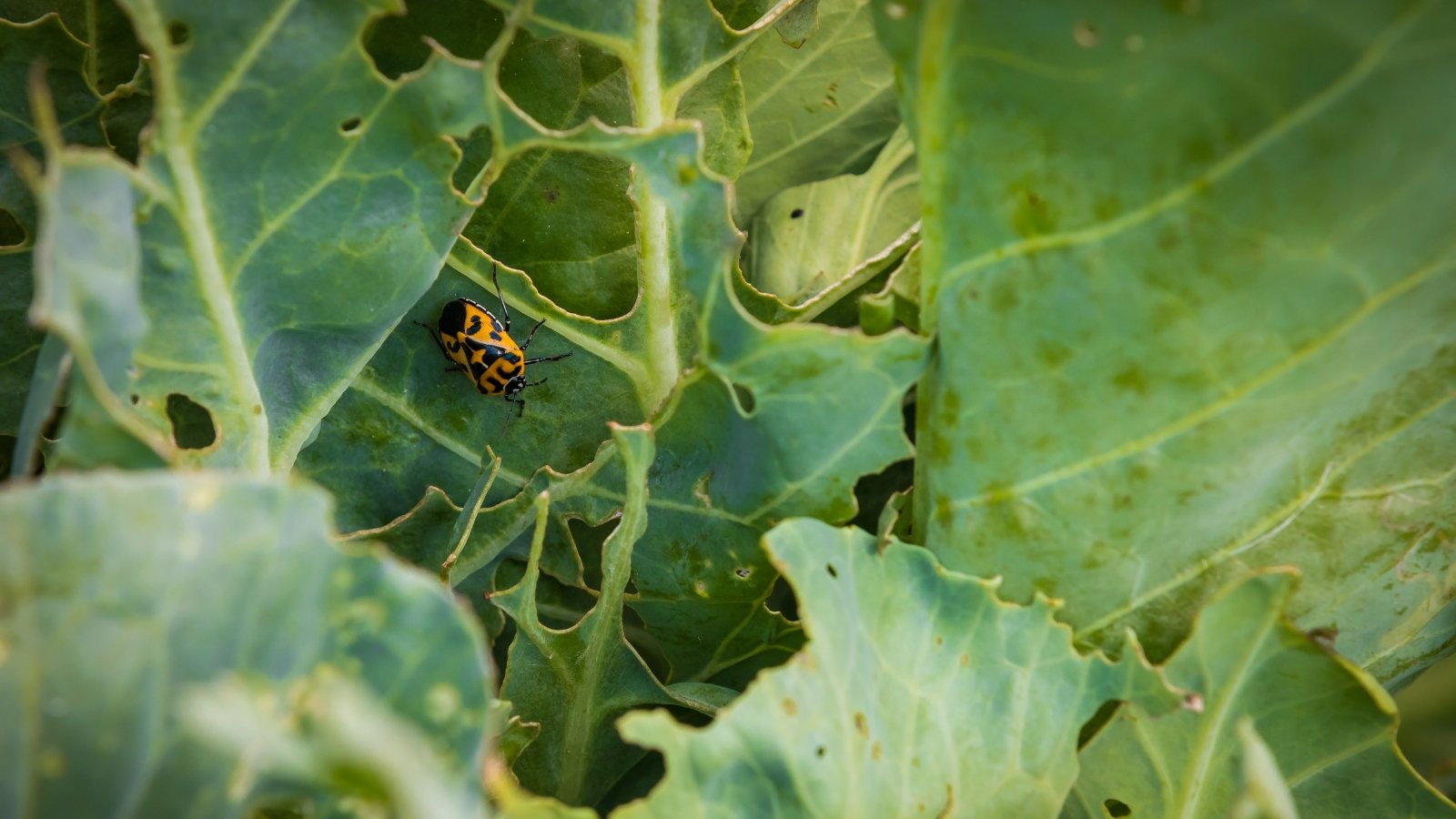

Harlequin bugs are harmful insect pests that feast utterly on cabbages and utterly completely different cruciferous greens. They’re prevalent all by means of the southern half of america and will set off excessive injury if not managed.
The black and white banded eggs are laid on the undersides of the leaves of a relevant host plant. The eggs hatch into tiny spherical, dome-backed insect nymphs with shiny orange and black markings. At this stage, they may almost be confused with ladybug beetles.
As these bugs develop, develop, and molt, their patterns change, nonetheless all of them have variable patterns of black, white, and orange markings. Grownup harlequin bugs are additional merely acknowledged as a species of stink bugs with their angular our our our bodies and daring black and pink, orange, or yellow markings.
Harlequin bugs pierce and suck the juices from plant leaves. Affected vegetation wilt and leaves flip yellow and brown. Plant progress is stunted and your vegetation could die if significantly contaminated. These insect pests are merely seen and you shouldn’t have any downside figuring out them because of the culprits.
Administration harlequin bugs by retaining your yard clear and weed-free to cut once more habitat for hiding pests. Hand-pick and destroy any eggs, nymphs, or adults that you just merely see in your vegetation. If hurt is extreme and you have a large infestation, attempt spraying contaminated vegetation with an insecticidal cleaning cleansing cleaning soap.
Whiteflies


There are fairly a couple of totally utterly completely different species of whiteflies, nonetheless these most frequently discovered on cabbages and brassicas are the cabbage whiteflies. These are tiny flying bugs which can be, as their set up implies, white.
It’s possible you’ll or could not see these little pests nonetheless they do their truthful proportion of damage to cabbage vegetation. They’re most prevalent all through the autumn and often restricted to hotter climates the place they are going to overwinter.
Whiteflies suck plant juices and you’ll suppose that since they’re so small, they shouldn’t set off any excessive injury, nonetheless they do. Whiteflies reproduce shortly and shortly dwell in your cabbage leaves in large numbers. As they suck dietary nutritional vitamins out of your plant, they deposit a sticky honeydew that draws fungal sicknesses that set off additional hurt.
As quickly as you purchase youthful cabbage vegetation out of your native yard heart, examine them fastidiously for any signal of bugs, together with whiteflies, prior to bringing them dwelling. You don’t need to by likelihood carry these pests into your yard throughout the event you might keep away from it.
Invite and welcome helpful bugs to your yard to allow them to prey on these and utterly completely different insect pests. For many who happen to wish additional assist than the dragonflies and ladybugs can current, you presumably can spray with insecticidal cleaning cleansing cleaning soap, nonetheless use this with warning as it should most likely furthermore injury good yard bugs.
Slugs and Snails
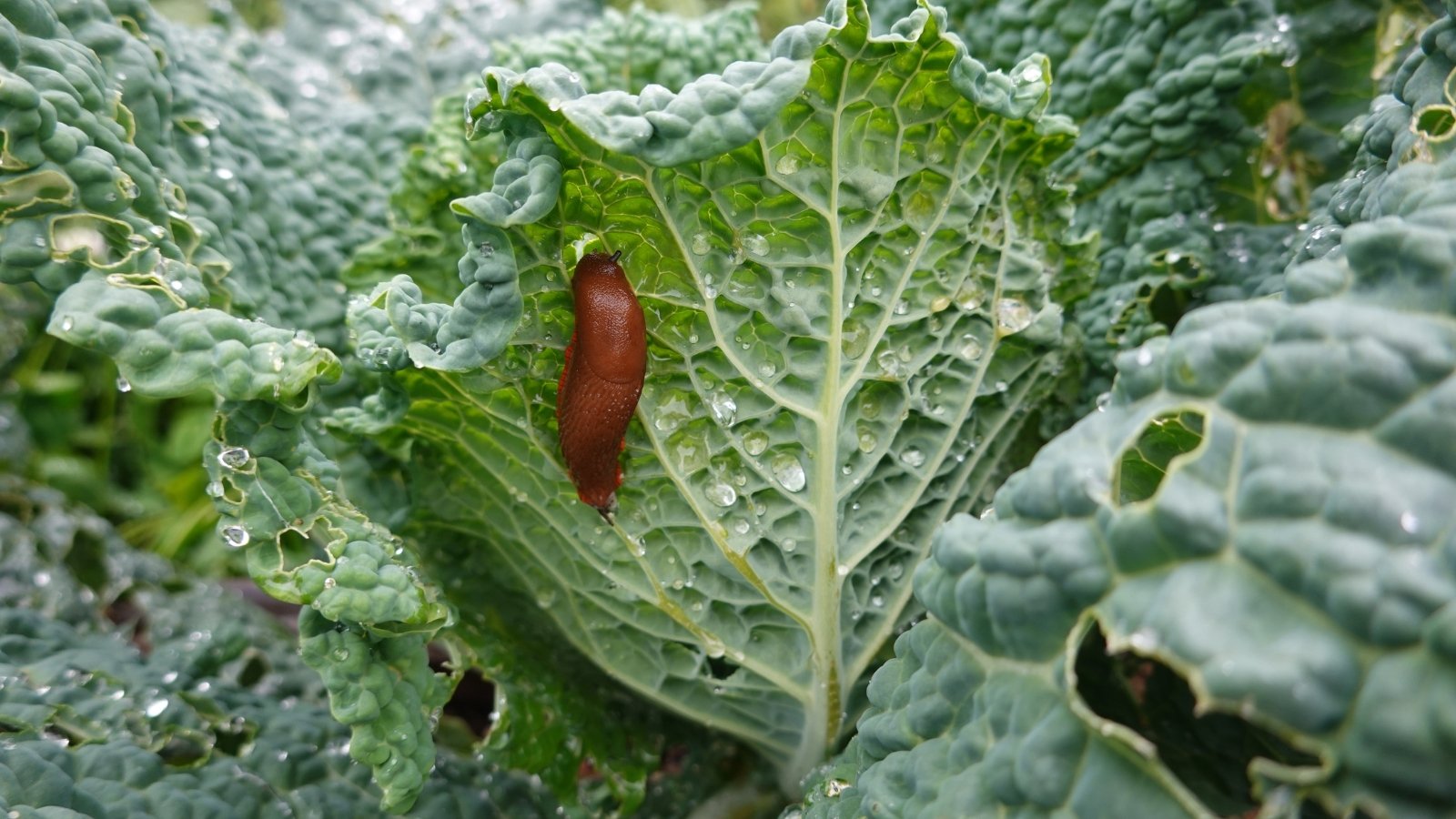

When you’ve got any protected, damp hiding areas in or spherical your yard, you probably have slugs and snails hiding obtainable in the marketplace. Slugs and snails feed primarily at evening time time nonetheless depart telltale slime trails on the leaves and the underside spherical your yard vegetation. All through the morning, you’ll see the hurt they set off contained in the type of smooth-edged holes alongside the sides and the providers of the leaves.
If given the prospect, these slimy pests feast on cabbages, lettuce, strawberries, hosta leaves, and a great deal of utterly completely different favourite yard vegetation.
Slugs and snails lay their eggs all through the soil, often beneath moist leaves, in compost piles, and beneath wooden, stones, and yard planters. Enhance any of this stuff and likewise you’re inclined to see not decrease than numerous snails hiding beneath.
Defend your vegetation from slugs and snails by eradicating their hiding areas. You may as well deter them with copper edging and diatomaceous earth, though you’ll ought to reapply the diatomaceous earth after rainfall. One completely different trick to attempt is setting beer traps which are a magnet for slugs away out of your vegetation and drown them.
Mammals
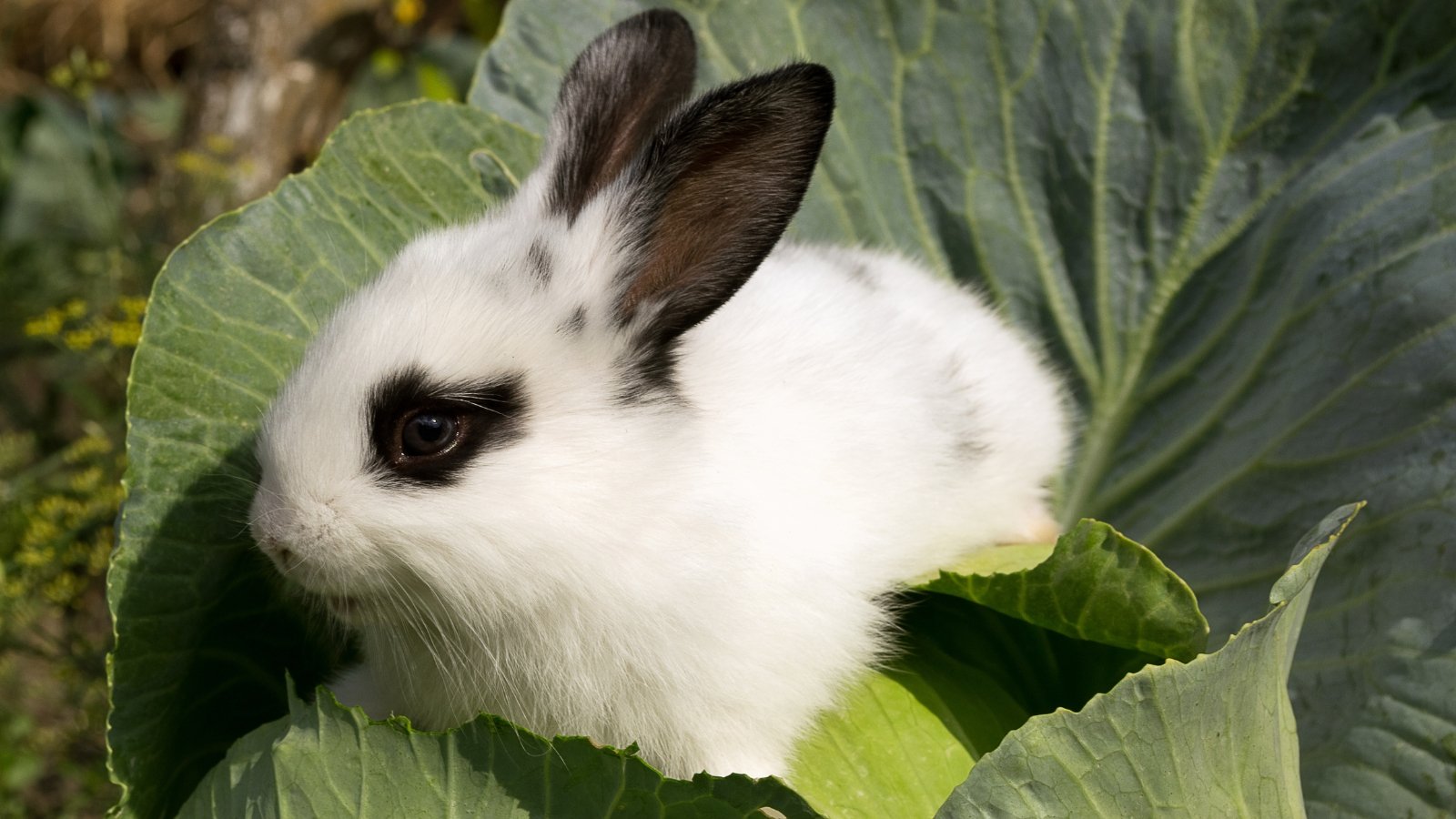

Deer, rabbits, squirrels, mice, and groundhogs eat a great deal of yard vegetation. They may every have their favourite vegetation to munch and, whereas cabbage could be not on the prime of all folks’s tips, searching mammals will probably not decrease than sort your cabbages, considerably when youthful and tender.
Mammals don’t merely nibble little holes all through the leaves of your creating cabbage head— they eat your full difficulty. In a single chunk. Chomp. Gone. It might be irritating, to say the least, to be watching your vegetation develop, and you then definately undoubtedly uncover that out of the blue they’ve vanished.
For many who need to protect deer and utterly completely different mammals away out of your cabbages, you’ll ought to plant your cabbages the place mammals can’t entry them. Plant your yard inside a fenced home.
Use critter cages to guard seeds, seedlings, and youthful vegetation, and hope that they’ll shortly develop huge ample to be uninteresting to munching mammals by the aim they’ve outgrown the cage.
Floating row covers furthermore work to guard vegetation from most mammals, so long as bigger animals, like deer, don’t merely stroll over them and crush them alongside the best method.
Normally Requested Questions
Pesticides will kill many insect pests. Sadly, they’re furthermore poisonous to bees, butterflies, pollinators, predatory bugs, and utterly completely different helpful bugs. They injury birds that feed on these bugs and organisms that dwell all through the soil and assist protect your soil healthful.
Attempt utterly completely different strategies to manage insect pests prior to resorting to pesticides. And throughout the event you do resolve that insecticides are the reply, make sure to review and regulate to the directions fastidiously and take precautions in opposition to respiratory and touching them, as many are poisonous to of us and pets together with bugs and wildlife.
Actually not! Many yard bugs are good to your yard. Pollinators are mandatory for many economically useful crops to produce fruits. Useful bugs usually mustn’t solely pollinators nevertheless in addition to predatory bugs. Predatory bugs, like ladybugs and dragonflies, eat large numbers of insect pests and assist protect these pest populations low.
You presumably can entice helpful bugs to your yard by planting quite a few vegetation and flowers that bloom at totally utterly completely different circumstances of the 12 months. Select vegetation which can be acknowledged to be considerably engaging to helpful bugs. Keep away from utilizing pesticides in your yard on account of they kill all bugs, helpful and dangerous.
Optimistic. Develop your cabbages and utterly completely different yard vegetation within the best situations you presumably can current. Give them quite a lot of daylight, quite a lot of water, and quite a lot of high-quality dietary nutritional vitamins. Healthful vegetation are resilient vegetation!
[ad_2]
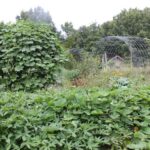


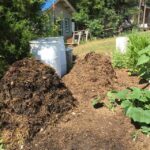


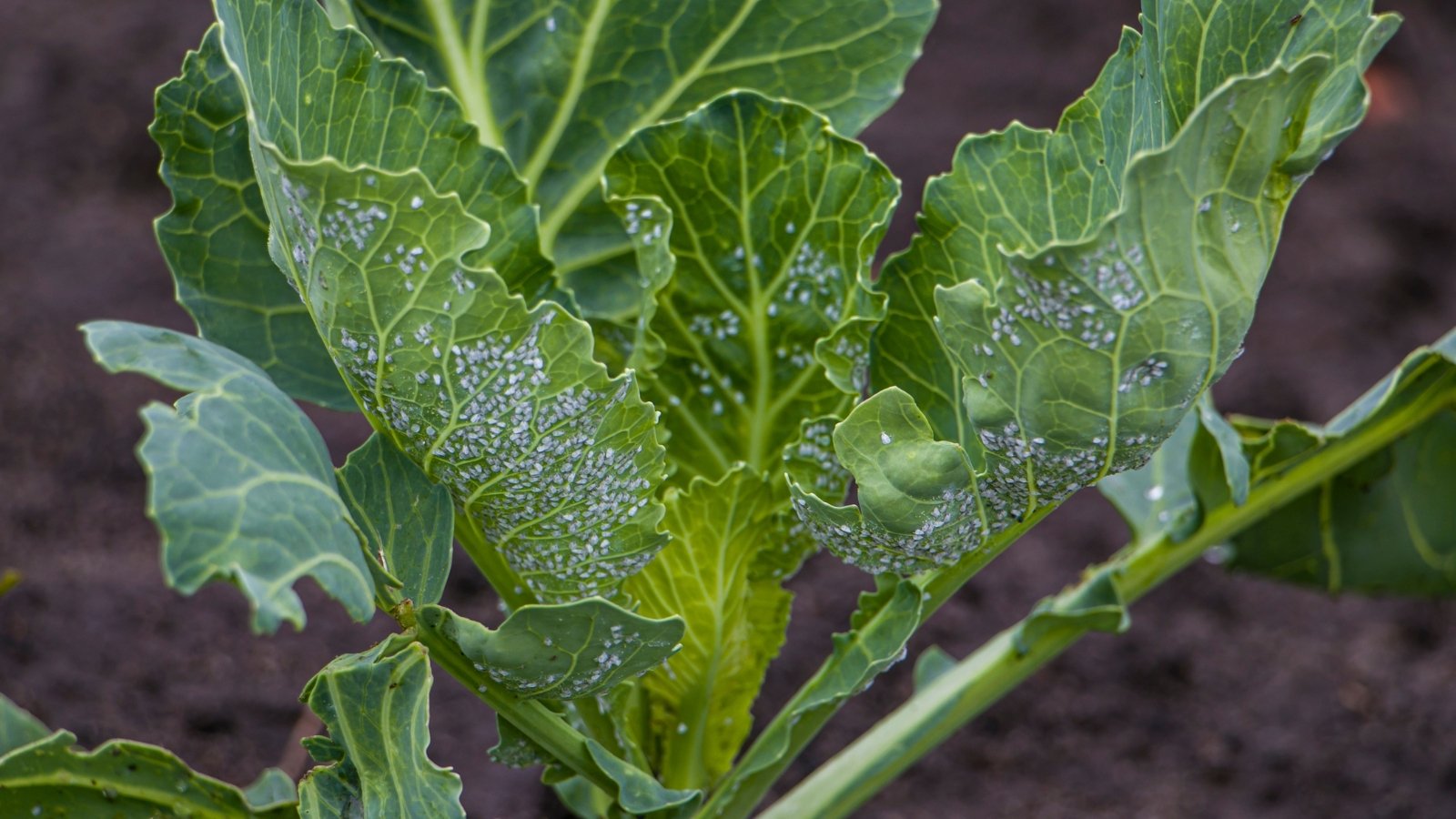
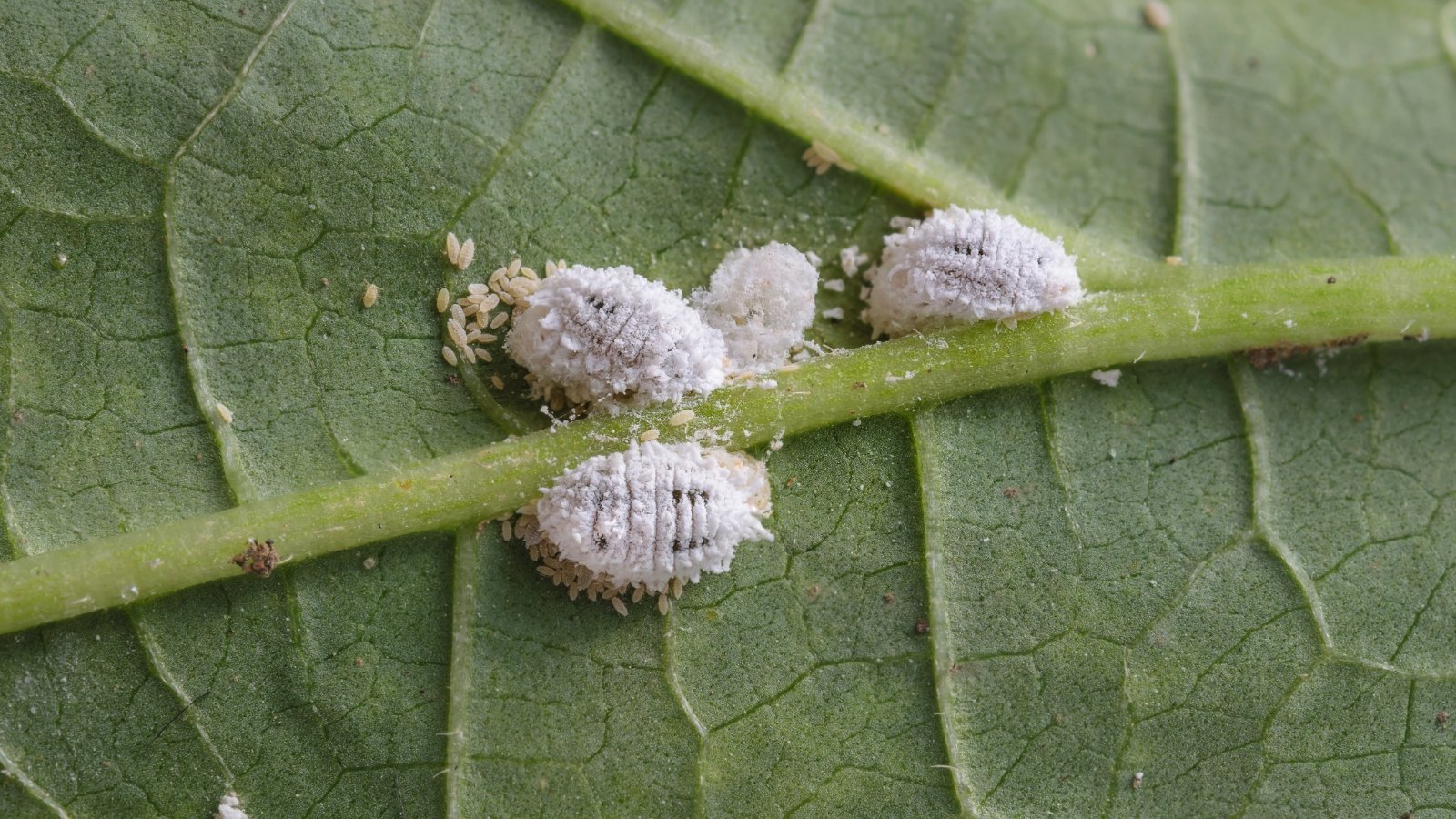

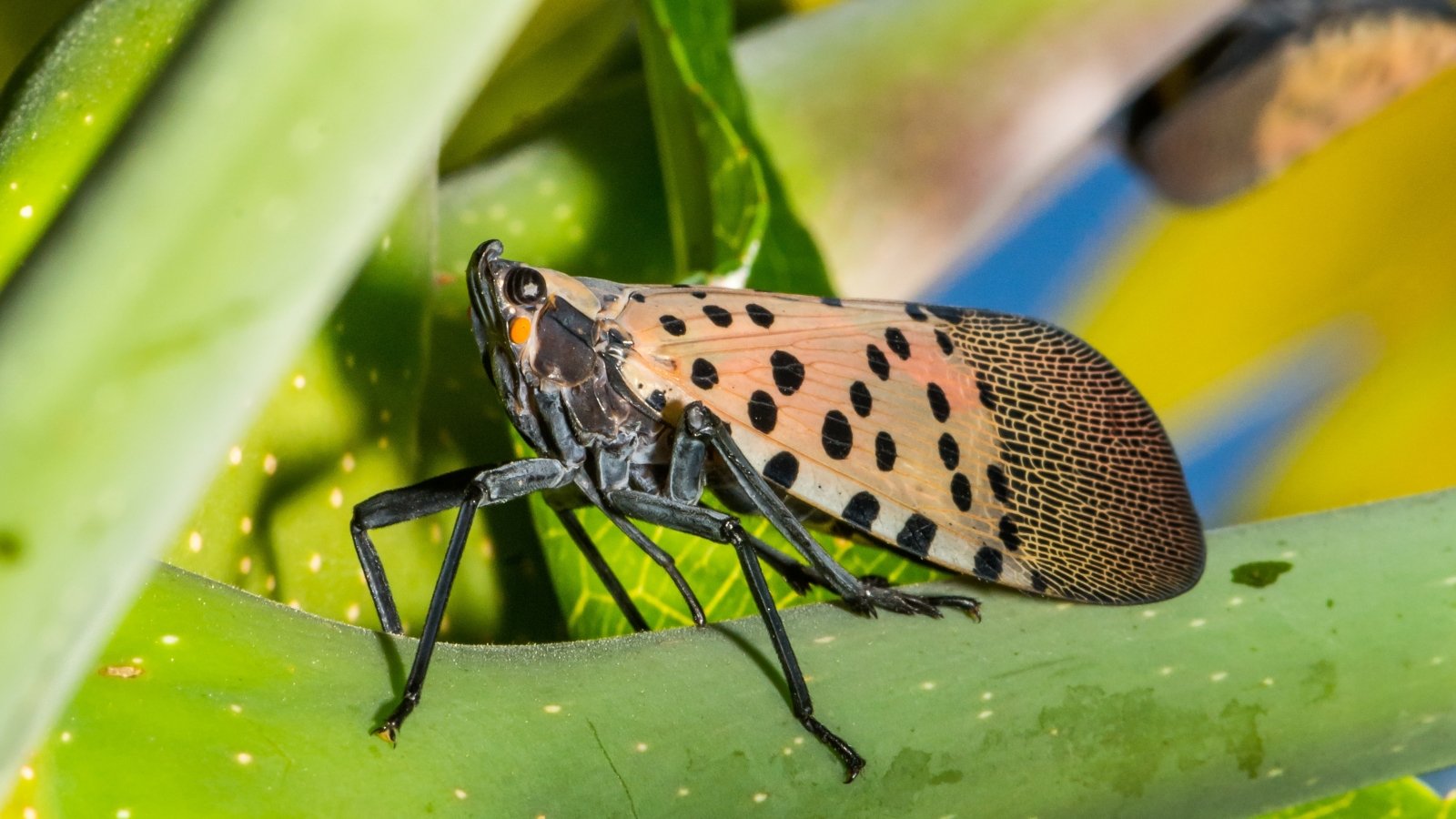
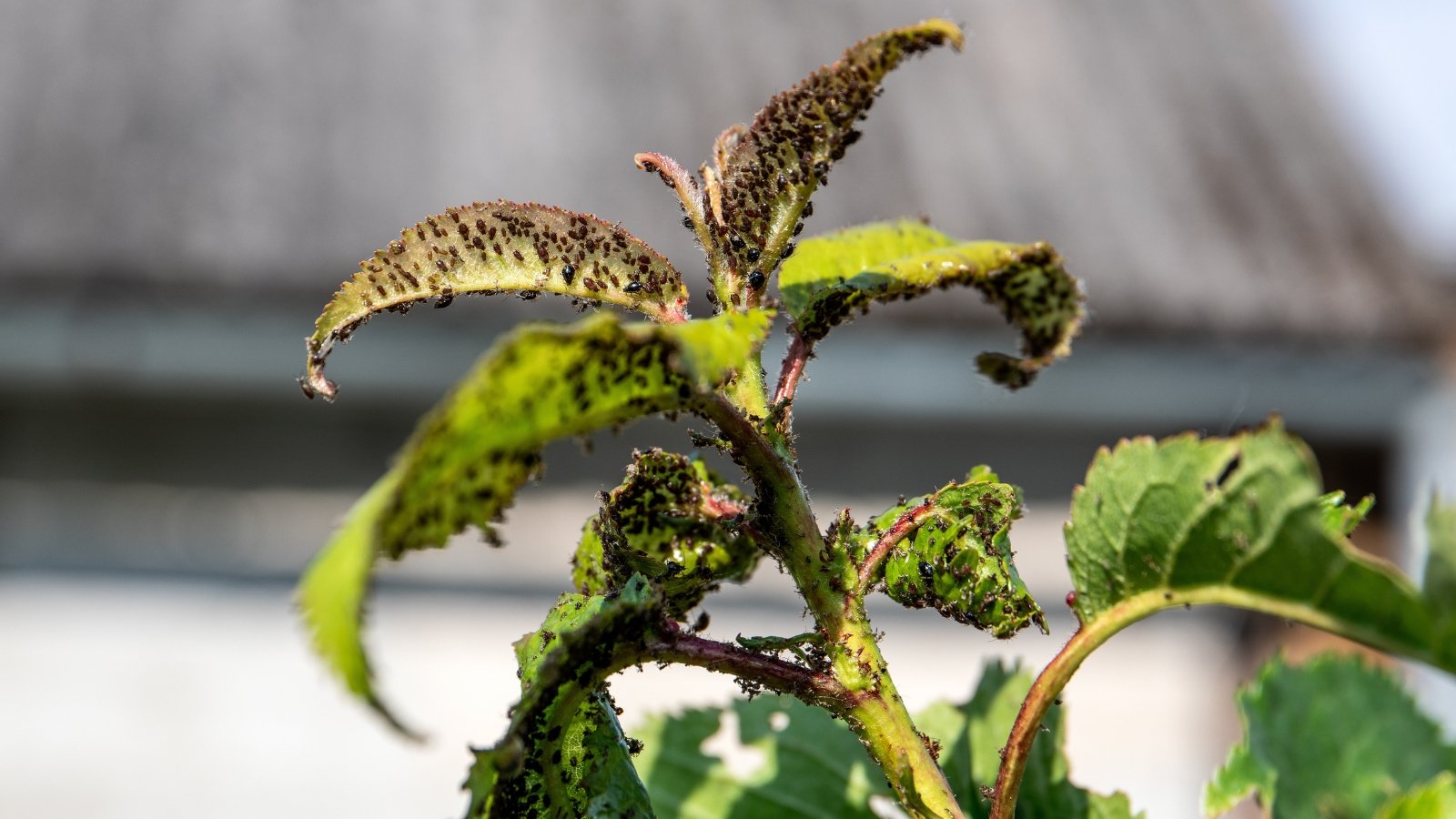
This article provides a comprehensive overview of the various pests that can affect cabbage crops. It’s informative to see the detailed descriptions of each pest and the suggested control methods, which could benefit many gardeners.
It’s interesting to learn about the different types of pests that threaten cabbage plants. The detailed explanations regarding their habits and effective control strategies are particularly helpful for novice gardeners like myself.
The insights shared in this piece regarding pest management for cabbage crops are quite valuable. Knowing how to identify and manage these pests can make a significant difference in garden productivity.
I appreciate how this article not only lists common cabbage pests but also offers practical solutions for dealing with them. Understanding these pests is essential for anyone looking to maintain a healthy garden.
Overall, this article serves as a useful resource for gardeners facing challenges with cabbage cultivation. The emphasis on natural pest control methods is especially important in promoting sustainable gardening practices.